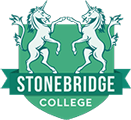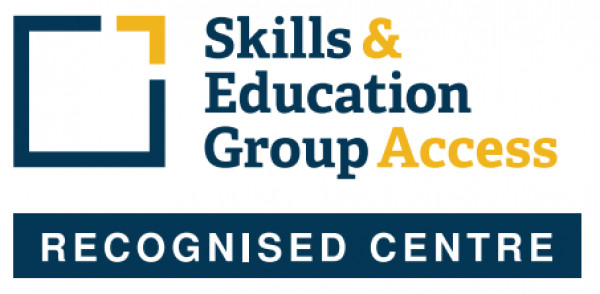International Human Resource Management.
International Human Resource Management
For many years, human resource management was seen as the "poor relation" of the business functions. Limited to a low-key administrative role, concerned with employee welfare and payroll administration, or at best a trouble-shooting role concerned with resolving labour-management conflicts, human resource professionals were rarely seen as having any significant role to play in determining the organisation's overall strategy. In the words of Peter Drucker, personnel was the "trash can".
How things have changed. Increasingly, managers are now realising that the key resource determining the effectiveness of an organisation is its human resources: its people. As long ago as the late 1970s and early 1980s, North American and European managers were beginning to realise that what made Japanese businesses so different, so superbly competitive, was their approach to managing people.
The American management consultants, Peters and Waterman, searching for examples of business excellence in the US, decided that the key lay in the distinctive cultures of their "excellent" businesses.
Current debates in strategic management focus on the conditions for the creation of sustainable competitive advantage. It is becoming clear that many of the traditional marketing and product development bases of competitive strategy can be imitated by competitors relatively easily - the advantage gained through such strategies is often simply not sustainable.
This is less the case with human resource management. The way an organisation treats its staff, an organisation's culture and its approach to teamwork and innovation are all potentially distinctive and value-creating characteristics that have the potential to create competitive advantage.
Furthermore, the very idiosyncrasy and social complexity of such characteristics means that once created any advantage is likely to be sustainable simply because competitors will find it difficult to imitate.
Qualification: International Human Resource Management
On successful completion of your course, you will receive a Stonebridge Associated Colleges Certificate of Completion.
Your course certificate will also state the number of CPD points/hours the course is eligible for.
There is no experience or previous qualifications required for enrolment on this course. It is available to all students, of all academic backgrounds.
All course fees, inclusive of all payment plans including our Premium Credit Limited option, must be settled before certification can be ordered.
*You will have access to the course for 24 months.
Unit 1: Approaches to International Human Resource Management
Introduction
Objectives
What is human resource management?
What is international HRM?
References
Unit 2: Context of International HRM
Introduction
Objectives
The organisational context
The cultural context
References
Unit 3: Staffing the Organisation
Introduction
Objectives
Human resource planning
Approaches to international staffing
Expatriate staffing
Integration without parent-country expatriates
Selecting expatriates
Selecting host- and third-country nationals
International differences in selection practices
Summary
References
Unit 4: Managing Performance in an International Context
Introduction
Objectives
What is performance management?
Appraising individual performance
Expatriate performance management
Appraising host-country nationals
Summary
References
Unit 5: Training and Developing the International Workforce
Introduction
Objectives
Training and career development for expatriates
Training and development of host-country nationals
Training and culture in the local environment
Developing a global perspective
Summary
References
Unit 6: Reward Management for International HRM
Introduction
Objectives
Aims of international reward management
Components of international remuneration
Approaches to international reward management
Taxation
Pay and motivation in an international context
Summary
References
Unit 7: Repatriation Policies and Practices
Introduction
Objectives
The repatriation process
Career development issues
Easing the repatriation process
Summary
References
Unit 8: Employee Relations and the International Firm
Introduction
Objectives
Trade union recognition
Country of origin and employee relations
Response from labour
Regional integration and employee relations
Summary
References
Unit 9: Issues and Challenges in International HRM
Introduction
Objectives
Country case studies: China and India
Social responsibility in an international context
Strategic IHRM
Summary
References
Appendix
Assessment Method
After each lesson there will be a question paper, which needs to be completed and submitted to your personal tutor for marking. This method of continual assessment ensures that your personal tutor can consistently monitor your progress and provide you with assistance throughout the duration of the course.
Course Text
For this course, you will be required to purchase the following textbook:
Peter J Dowling, Denice E Welch and Randall S Schuler (1999) International Human Resource Management: Managing People in a Multinational Context, third edition, Cincinatti, OH: South-Western College Publishing.
What's Included
- All study materials
- Study Guide
- Full Tutor and Admin support
For many years, human resource management was seen as the "poor relation" of the business functions. Limited to a low-key administrative role, concerned with employee welfare and payroll administration, or at best a trouble-shooting role concerned with resolving labour-management conflicts, human resource professionals were rarely seen as having any significant role to play in determining the organisation's overall strategy. In the words of Peter Drucker, personnel was the "trash can".
How things have changed. Increasingly, managers are now realising that the key resource determining the effectiveness of an organisation is its human resources: its people. As long ago as the late 1970s and early 1980s, North American and European managers were beginning to realise that what made Japanese businesses so different, so superbly competitive, was their approach to managing people.
The American management consultants, Peters and Waterman, searching for examples of business excellence in the US, decided that the key lay in the distinctive cultures of their "excellent" businesses.
Current debates in strategic management focus on the conditions for the creation of sustainable competitive advantage. It is becoming clear that many of the traditional marketing and product development bases of competitive strategy can be imitated by competitors relatively easily - the advantage gained through such strategies is often simply not sustainable.
This is less the case with human resource management. The way an organisation treats its staff, an organisation's culture and its approach to teamwork and innovation are all potentially distinctive and value-creating characteristics that have the potential to create competitive advantage.
Furthermore, the very idiosyncrasy and social complexity of such characteristics means that once created any advantage is likely to be sustainable simply because competitors will find it difficult to imitate.
On completion of your course, you will receive a certificate:
Stonebridge Associated Colleges: International Human Resource Management Diploma
International Human Resource Management Diploma issued by Stonebridge Associated Colleges, to view a sample of the college’s award, please click here.
Professional Membership
On completion of this course you will be eligible to join the following Professional Associations(s):
On successful completion of your course your qualification is awarded. You will receive an attractively presented Diploma or Certificate issued by Stonebridge Associated Colleges, this will also allow you to use the letters SAC. Dip. or SAC. Cert. after your name.
Stonebridge Associated Colleges is one of the leading (and biggest) distance education colleges in the U.K and internationally. We have many thousands of students studying with us at any one time from locations all over the world. Our diplomas will always count towards your future, and will improve your prospects of future employment or higher level study etc. by proving that you have studied to a certain level, that you have proficiency in your chosen subjects and that you are interested in your field of choice. Education is always an investment in your future and you will find this to be the case with our qualifications in your jurisdiction.
Unit 1: Approaches to International Human Resource Management
Introduction
Objectives
What is human resource management?
What is international HRM?
References
Unit 2: Context of International HRM
Introduction
Objectives
The organisational context
The cultural context
References
Unit 3: Staffing the Organisation
Introduction
Objectives
Human resource planning
Approaches to international staffing
Expatriate staffing
Integration without parent-country expatriates
Selecting expatriates
Selecting host- and third-country nationals
International differences in selection practices
Summary
References
Unit 4: Managing Performance in an International Context
Introduction
Objectives
What is performance management?
Appraising individual performance
Expatriate performance management
Appraising host-country nationals
Summary
References
Unit 5: Training and Developing the International Workforce
Introduction
Objectives
Training and career development for expatriates
Training and development of host-country nationals
Training and culture in the local environment
Developing a global perspective
Summary
References
Unit 6: Reward Management for International HRM
Introduction
Objectives
Aims of international reward management
Components of international remuneration
Approaches to international reward management
Taxation
Pay and motivation in an international context
Summary
References
Unit 7: Repatriation Policies and Practices
Introduction
Objectives
The repatriation process
Career development issues
Easing the repatriation process
Summary
References
Unit 8: Employee Relations and the International Firm
Introduction
Objectives
Trade union recognition
Country of origin and employee relations
Response from labour
Regional integration and employee relations
Summary
References
Unit 9: Issues and Challenges in International HRM
Introduction
Objectives
Country case studies: China and India
Social responsibility in an international context
Strategic IHRM
Summary
References
Appendix
Assessment Method
After each lesson there will be a question paper, which needs to be completed and submitted to your personal tutor for marking. This method of continual assessment ensures that your personal tutor can consistently monitor your progress and provide you with assistance throughout the duration of the course.
Course Text
For this course, you will be required to purchase the following textbook:
Peter J Dowling, Denice E Welch and Randall S Schuler (1999) International Human Resource Management: Managing People in a Multinational Context, third edition, Cincinatti, OH: South-Western College Publishing.
What's Included
- All study materials
- Study Guide
- Full Tutor and Admin support
Our Advisors.
Our team of course advisors are keen to help.
Call us now on 0121 392 8288
Alternatively, please complete the form below and we’ll get back to you as soon as possible.
80,000 learners.
650 courses.
flexible payment
options.
Our student support team is here for you.























